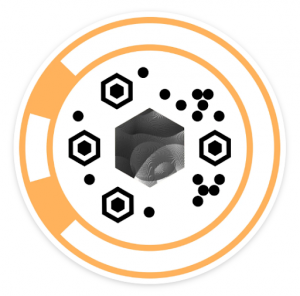Shauli Zacks
Updated on: September 26, 2025
SafetyDetectives recently spoke with Hugo Garcia-Cotte, Co-Founder and CEO of Cypheme. Hugo shared how a personal experience in China exposed him to the devastating impact of counterfeit products and led him to develop AI-powered solutions to fight the problem. In this interview, he explains why traditional anti-counterfeiting technologies fall short, how Cypheme’s “Noise Print” innovation stands apart, and what the future holds for AI-driven product authentication.
Can you share what led you to co-found Cypheme? What was the “aha” moment that made you decide to tackle counterfeiting with AI?
I lived in China for the past 10 years, and during that time, one of my co-founder’s parents took a counterfeit medicine. Thankfully she’s okay now, but back then we were really shocked. I thought, there has to be a way to tell if something is counterfeit. This is a much bigger problem than anyone realizes.
Right now, counterfeiting kills 100 people per hour, which is more than malaria. According to the latest figures from the CDC, 24% of Americans have suffered from the effects of fake medicine. In Nigeria, 64% of anti-malaria medicine is fake. The problem is gigantic, and very few people around the world are aware of it.
When you live in China, you see it firsthand. Everything is counterfeited, even water bottles. That was what triggered us to go into anti-counterfeiting, especially because back then the technology being used was very weak. Holograms and QR codes are so easy to counterfeit.
It seemed obvious to me that something needed to be done.
Can you tell me a little bit about Cypheme? I understand you use “Noise Print”—an AI-driven fingerprint label—to detect fakes using just a smartphone. How does that actually work, and what makes it different from other anti-counterfeit solutions?
The vast majority of anti-counterfeiting solutions were invented in the 1940s, 1950s, or 1980s at best. Holograms, QR codes, scratch codes—all of these are incredibly easy to counterfeit.
We had a US-based client who used scratch codes. It was an e-cigarette brand with a scratch code on each packet. According to their own admission on their blog, 70% of Puff Bar products in the US were fake.
What most people don’t understand is that these legacy technologies are actually dangerous. As a user, you scratch the code, it says genuine, so you buy it—but it could still be fake. Instead of protecting, it becomes a marketing tool for counterfeiters because it gives them legitimacy they don’t have. Counterfeiters are usually wholesalers of the brand. They start by selling the real thing, then at some point switch to selling more fakes for higher margins. To gain legitimacy in the supply chain, weak anti-counterfeiting technology like holograms or QR codes actually helps them.
If you’re a wholesaler with one batch of vapes for $7 and another for $14, both with holograms that look legit, you’ll buy the cheaper one. That’s what most people don’t realize—most anti-counterfeiting technologies simply don’t work.
It’s crazy, and many competitors are cynical about it. They advertise their technology as “undefeated,” but I’ve walked into meetings and shown clients fake tags of theirs available on Alibaba for cheaper than the real thing.
Even very prestigious names like De La Rue—famous for making banknotes worldwide—have anti-counterfeiting divisions. A client of ours used their tags, and within six months the market was flooded with fakes indistinguishable from the real thing.
Where we differ is we have a zero-fake policy. We guarantee our clients they won’t have a single fake. How do we do that? The tag itself has a chemically unique signature.
Our tags are not QR codes or holograms. They may look similar, but they’re not. It’s a sticker with a drop of ink in the middle that chemically generates a unique signature for each tag. If we produce a million tags, we get a million unique signatures. Then we use AI to read the signature and ensure authenticity.
This technology remains undefeated by counterfeiters. Thousands of attempts have failed.
Not only do we prevent fakes, but we also use this as a honeypot to throw counterfeiters in jail. Right now, 18 counterfeiters are in jail because of us, and we’ve identified seven more networks with their exact addresses.
So how are we different? We’re an actual thorn in counterfeiters’ side. To my knowledge, we’re the only technology like that. There are high-security NFC solutions, but they cost several dollars. If we were just a QR code or hologram, counterfeiters would love us—it would help them sell more. But because they haven’t broken our technology despite trying, we remain a real threat to them.
Is your primary focus on pharmaceuticals or other industries as well?
We are industry- and geography-agnostic. We operate in more than 20 industries and over 100 countries.
Pharma is important—especially para-pharma, surprisingly more than pharma. But our number one market is vapes. When I started this company, I had no idea vapes would be such a big market for anti-counterfeiting, but it is. After vapes, governments, para-pharma, and cosmetics are big markets. We also protect things you wouldn’t expect, like Pokémon cards, bank safes, and cables, and other things you wouldn’t expect.
Your platform includes a dashboard that shows geolocation trends and counterfeit activity. How have brands used that data to take action and protect their reputation?
Your platform includes a dashboard that shows geolocation trends and counterfeit activity. How have brands used that data to take action and protect their reputation?
For brands, the core goal is to catch counterfeiters. When we provide reports, some brands don’t act, but some do. When they catch counterfeiters, it significantly reduces activity.
It never completely stops, but it reduces it because counterfeiters get scared. At first they may think it’s free money, but once people start going to jail, they reduce their activity. In fact, not only do we guarantee that counterfeiters won’t be able to make fakes, but we also use this as a honeypot to put them in jail. Right now, 18 counterfeiters are in jail because of us, and we’ve identified seven more networks with their exact addresses. I can’t disclose exactly how we do it, but the geotracking is essential.
Right now, wholesalers rarely buy directly from brands. They buy from other wholesalers and often don’t know what they’re getting. Most shops or smaller wholesalers genuinely don’t realize they’re buying fakes.
The ability to verify is crucial. Of course, you want end users to verify too, but the real value is when wholesalers reject shipments: “Yes, it’s cheaper, but it’s fake—no thanks.” That’s where you see a real drop in counterfeit activity.
We had a case with an anti-cancer medicine that prevents metastasis of lung cancer to the brain. If patients take a fake version for just one month, the cancer can spread, and then nothing can stop it. Unfortunately, up to 40% of this medicine on the market was fake, causing thousands of deaths each month.
After applying our solution, doctors stopped prescribing the fake version, pharmacies stopped selling it, and patients could check authenticity. The number of fakes collapsed from 45% to 5%. It’s still not zero, because not everyone checks, but the impact was huge.
Looking ahead, where do you see Cypheme heading in the next few years? Any emerging threats or innovations you’re particularly excited—or wary—about?
We have a very exciting innovation called Vrai AI. I fully subscribe to Mark Zuckerberg’s philosophy: something will kill Facebook, so it’s better if Facebook invents it. I believe the same—something will kill anti-counterfeiting tags, and I want to be the one to push it first.
I truly believe we have the best tag on the market. Of course, I’m biased as CEO, but any real expert will confirm it. Most tags are easily broken, and nobody but us guarantees zero fakes. Making a better tag isn’t really possible.
So what will kill tags? Having no tags.
We’ve created a computer vision technology that can detect fakes just by taking a picture of the packaging—no tags required. For example, with a common anti-malaria medicine in Nigeria, one box will cure you and one will kill you, and they look identical to the naked eye.
Our AI can see tiny mistakes counterfeiters make and tell which one is fake.
We even trained it on the best counterfeit banknotes at the European Central Bank, and it works. That’s the crazy part—we can detect fake banknotes from a picture.
We’re spinning this off into a new venture. I’m lucky to have serial entrepreneur Thilo Fuchs and Stanford professor David Stork as co-founders. When we showed David, he didn’t believe us at first, but after double-checking, he said, “This is insane; I’m in.”
Since then, we’ve signed $7 million in LOIs with several governments, and we’ve been invited to present the technology at the G20 this year.
This is something I’m very excited about. It’s a proprietary model—not LLM-based—and I see it as the long-term future of the industry. Mark my words: 20 years from now, customs officers will have vision-based anti-counterfeiting detection. Platforms like eBay and Amazon, currently filled with fakes, won’t have to be.



